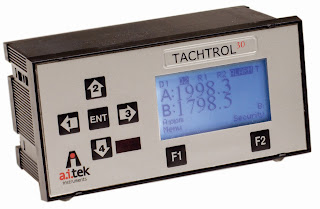
The new One Series Safety Transmitter is available in versions that monitor temperature and pressure. Its features include "an exclusive design that means fewer nuisance trips and greater safety and productivity, an internal high-speed safety relay for the fastest emergency shutdown, greater affordability than adapting a process transmitter for safety applications, and a higher safe failure fraction that simplifies SIL achievement," said Wil Chin, Vice President of Marketing and Business Development, United Electric Controls.
The One Series transmitter provides 4-20 mA NAMUR standard output with exclusive "I Am Working" diagnostics. A unique, high-speed safety relay output is incorporated for local alarm or emergency shutdown. Discrete outputs deliver diagnostics and relay status voting logic input to the safety PLC to determine appropriate action. The transmitter is certified for use in SIL 2 safety instrumented systems, and is capable of SIL 3 per IEC 61508. It has configurable self-diagnostics and achieves a safe failure fraction of 98.5%. Instrument response time is less than 100 milliseconds.
Additional features include:
- A large digital display that provides process variable, status, self-diagnostics and field programming information
- 100% programmable solid-state relay (switch set point & deadband)
- Effectively replaces a gauge, transmitter and a switch to reduce potential leak paths
- Certified for use in SIL 2 plant safety applications with FMEDA report available Worldwide hazardous location approvals for Class I, Divisions 1 & 2 (Zones 0, 1 & 2)
One Series Safety Transmitter
Engineered to Protect
The One Series Safety Transmitter gives plant safety teams simple setup and faster, safer performance, right from the start - all at a more affordable price. Don't use a costly, over complicated process transmitter that must be adapted for safety use. The One Series Safety Transmitter is the first SIL 2-certified transmitter designed solely for safety system applications. It's the only One that comes with an internal high-speed safety relay for the fastest emergency shutdown. And that simple design means fewer nuisance trips - for greater safety, productivity, and throughput.

One and You're Done
The One Series Safety Transmitter is available in versions that monitor temperature and pressure. They provide a 4-20 mA NAMUR standard output with exclusive "I Am Working™" diagnostics. A unique, high-speed safety relay output is provided for local alarm or emergency shutdown. Discrete outputs deliver voting logic input to the safety PLC to determine appropriate action. The One Series Transmitter is certified for use in SIL 2 safety instrumented systems, and is capable of SIL 3 per IEC 61508. It has configurable self-diagnostics and achieves a safe failure fraction of 98.5%. Instrument response time is less than 100 milliseconds.
It's the one:
- Fewer nuisance trips for greater productivity
- More affordable than adapting a process transmitter
- Internal safety relay for faster emergency shutdowns
- Higher safe failure fraction simplifies SIL achievement
If you would like more information, pricing and availability on the UE One Series Safety Transmitter or other United Electric Controls products please contact Forberg Scientific Customer Service.
Toll Free: 855-288-5330
Email: mechanicalsales@forberg.com
Forberg Website: www.forberg.com
UE Website: www.ueonline.com




















